We all have an “oops” moment that ruins your clothing! Tore your pants on a nail? Dropped paint on your sweater? Maybe you burn a hole in your favorite blouse? Fear not embroiderers! You can fix your garments, making them even better!
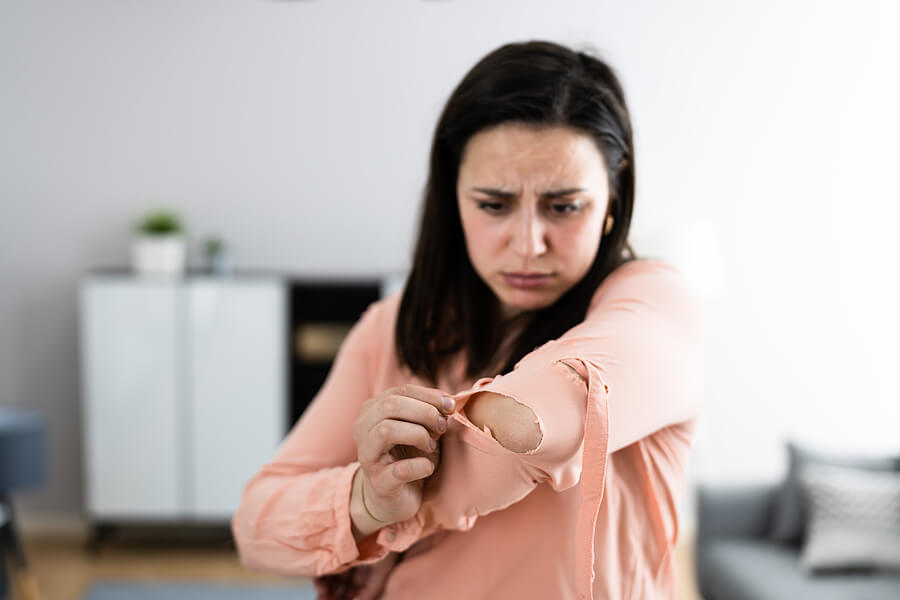
Today, we will look at patching, stitching, covering, cutting and eliminating holes, and saving a lot of garments. You will have an upscale item while having fun. As always, the more creative, the better!
Using Machine Embroidery To Repair Holes
Let’s look at common holes that occur within our garments.
How To Repair L Shaped Tears With Machine Embroidery
Let’s start easy! You tore your jeans on a nail, and now you have an “L” shaped tear. Easy! Lay the jeans down inside out and iron a small piece of light fusible stabilizer over the tear; this will hold the tear together and stabilize. Turn your pants right side out and hoop with a stabilizer.
Now pick your favorite design and embroider over the hole. Make sure that it is at least ¼ inch larger than the tear, or you can have some unhappy stitching. Trim the backing and show off your new “designer” jeans.
Interested in high-quality embroidery designs? Check out our close to 30,000 smooth-running embroidery designs by clicking here. Our giant collection of embroidery designs has you covered for what you’re looking for.
How To Mend A Seam Tear
Seam tears are a bit harder to fix as attempting to embroider over that folded seam can cause damage to your machine. After stabilizing the seam with your stabilizer, reinforce with another piece of fabric and using a normal sewing machine stitch back and forth with a zigzag stitch until stable. Then using an embroidered patch cover your zigzag!
How to Machine Embroider Over Holes In Knit Fabrics
Knit fabrics are a bit more complicated. You will not want to iron on stabilizer because you lose the softness of the knit.
Proper hooping is a must! It is best not to float these garments as you need all the stability you can get. Instead, hoop your stabilizer and knit with the hole centered in the hoop.
Need help hooping? Check out our complete embroidery hooping guide.
If you’re creating your own embroidery design to cover up holes in your knit fabrics, using a “Hatch Smash” knockdown stitch is highly suggested.
What is a Hatch Smash knockdown stitch? When dealing with fabrics that have a high pile (or are fluffy), stitches can often sink into the fabric. To fix this, the “Hatch Smash” stitch will give a loose-fill stitch with no underlay and no traveling stitches. The color of the thread used should be similar to your fabric color.
Do you want to learn how to create your own “Hatch Smash” design using Hatch? Check out our tutorial here for step-by-step instructions!
Interested in trying our Hatch embroidery software? Click here for a free 30-day trial where you try Hatch software like you own it. Start creating your next embroidery design now.
How To Reinforce Worn Fabric With Embroidery
Reinforcing worn-out fabric is easy! Simply iron-on fusible interfacing to support the material hoop with stabilizer and embroider your design. In this case, choose large, less dense designs.
How To Replace Missing Fabric With Machine Embroidery
Digitize a Design Yourself
One great way to cover up holes in your garment is to digitize an embroidery design yourself to fit within the fabric!
Creating your own design can ensure you have the perfect design to make that hole into something that never happened. Learn how to fix holes using your cellphone, Hatch software, and some scrap materials with John in this YouTube video below. Check out the magic of what you can create on even the busiest of fabrics!
Check out our Free Digitizing 101 Cheat Sheet PDF & Video Course to learn more about embroidery digitizing.
Try Cutwork Embroidery
Does your garment have a big hole in it? Maybe it’s missing some fabric? A great idea to take advantage of this disadvantage is cutwork!
Depending on the location of the damage, use cutwork to make an excellent cutout! It is easier than you think, and it can really improve a garment (even without a tear!) The design is placed so the tear is removed, and the hole looks intentional. You can also add other areas on the garment to work that tear into a design. Browse our 40+ cutwork designs by clicking here!
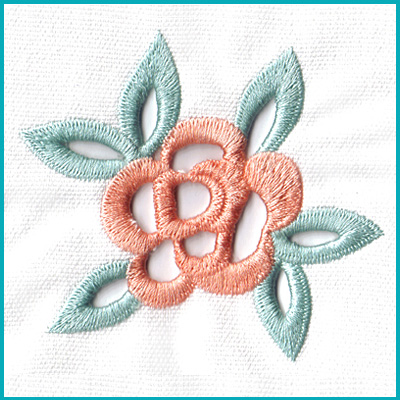
Interested in learning more about cutwork? Click here for a written step-by-step tutorial on how to create cutwork with your machine embroidery.
Check out our YouTube video and see for yourself how easily you too can do cutwork with embroidery!
How To Cover Up Stains With Machine Embroidery
How To Save Stained Garments With Machine Embroidery
You should have no difficulties embroidering over it if it is just a stain. Pick a pattern large enough to cover that area and get to work!
Do you think the stain is a pretty color? Consider incorporating that into your design as a background you “intended” to be there. Consider it an exercise in “inkblot doodling.”
How To Embroider Over Painted Fabric
What about paint? If the paint is thick, try to scrape off as much as possible (we do not want to hurt your machine) or consider cutting out the affected area and using the cutwork projects above.
Another idea to embroider over painted fabric? Just embrace the paint! We have a large selection of Sew N Color embroidery designs where you embroider your designs and then use fabric paint to add some color. Consider using colors similar to the already existing paint on your garment.
Check out our Sew N Color embroidery designs by clicking here to cover (or enhance) that paint!
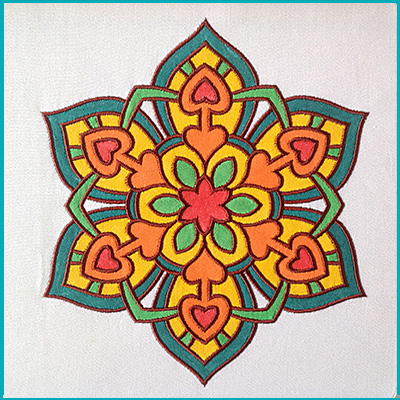
Interested in creating your own fabric paint for embroidery (not to mention machine wash friendly)? Watch our video below to create your own paint at home while on a budget!
Using Machine Embroidery When Fabric Is Ruined
Sometimes the fabric is just not salvageable. But don’t throw it away; you can recycle that fabric into pretty cool projects. Keep reading for some must try suggestions.
How To Embroider Crazy Quilts Using Machine Embroidery
If you have not seen a crazy quilt, they are amazing. You can digitize random shapes with decorative stitches, lay the pre-cut matching shapes down, and embroider over them. Save material while making a great quilt, throw, or pillow!
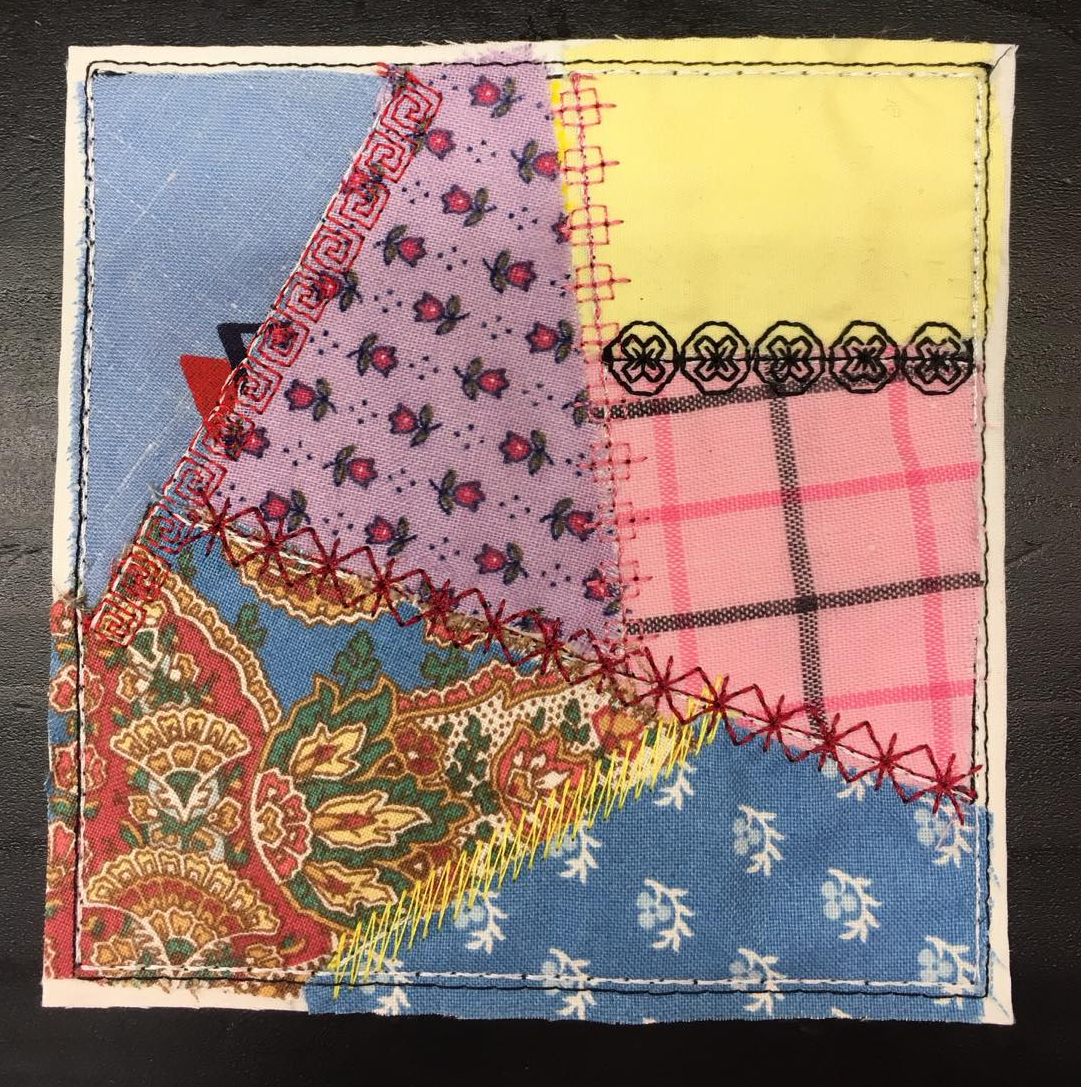
How To Make Pockets Using Machine Embroidery
Check out our full article on how to embroidery a pocket.
You can embroider designs or texture stitches over patterned fabric and use squares or other shapes for patch pockets or sewn on patches to cover problems.
For frayed edge patches, simply embroider the fabric, scissors clip into the edge every ¼ inch, and fray the fabric. After several washings, the patch will have a more frayed and fuzzy look.
Simply turn the edges over and sew on to your garment for patch pockets. Or check out our embroidery pocket embroidery designs by clicking here to make things even easier. Remember, pockets don’t have to be on a shirt or back of your jeans!
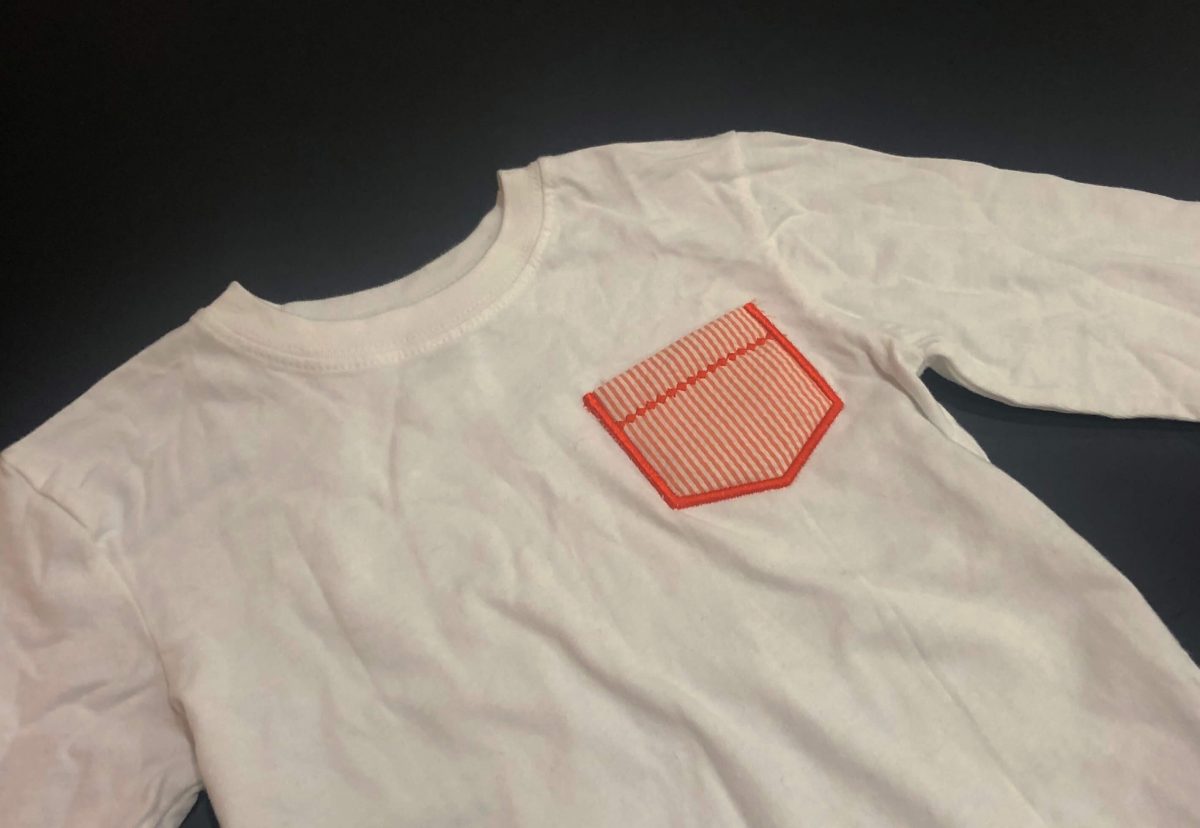
When Fabric Isn’t Usable For Machine Embroidery
Sometimes your garment just can’t be saved. Before you head to the trash bin, why not recycle your fabric into usable items? Sometimes you need a little guidance on using your leftover fabric; click here for seven easy ways to recycle your leftover embroidery stash and fabric scraps.
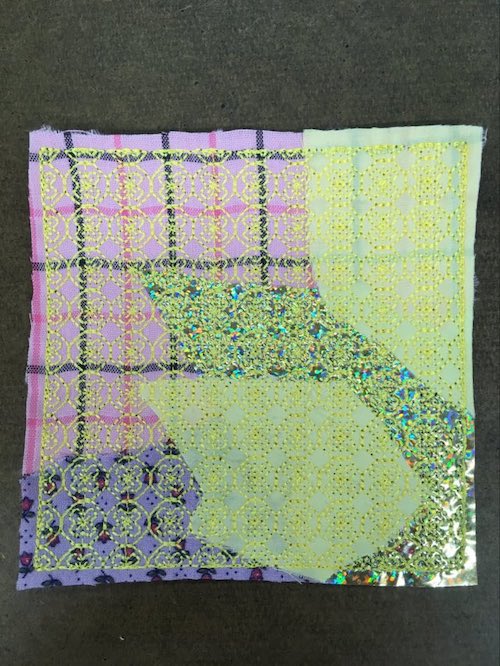
Conclusion: Use Machine Embroidery To Turn Your Accidents Into Intentional Creativity
When it comes to fixing holes in your garments with machine embroidery, fix it up, wear it out, make it do, or go without! Here are some key things to remember.
- Don’t throw clothes away until you attempt an awesome repair!
- Consider the tear or stain and then decide how to repair it. There is no wrong answer to repairing your garments, whether it involves cutwork, fabric paint, or creating your own embroidery design using the Hatch Smash feature.
- Can’t save your garment? Recycle it! Try out one (or a few) of our seven ways to recycle your leftover fabrics to save money and be creative.
P.S. Are you looking to fix and upgrade your wardrobe? Click here to check out our almost 30,000 high-quality embroidery designs to fix those holes in your garments. Pretend it was intentional (we won’t tell if you don’t!).